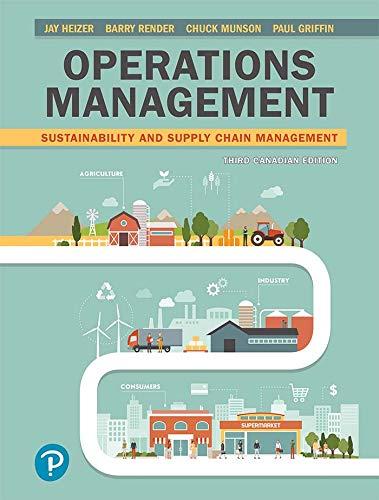Answered step by step
Verified Expert Solution
Question
1 Approved Answer
ELKO, a manufacturer of lighting fixtures, has been outstanding in developing new products, but the new CEO has observed some potential opportunities in optimizing its
ELKO, a manufacturer of lighting fixtures, has been outstanding in developing new products, but
the new CEO has observed some potential opportunities in optimizing its distribution system.
Current Distribution System
The company has SKUs in its product line, all manufactured in its own plants located in the
Cleveland area. For demand management purposes, the contiguous United States was divided
into regions as shown below. Each region was served by a separate distribution center DC
owned by ELKO. Customers all business: retailers, contractors, offices, etc. placed orders with
their DC which tried to supply them from inventory. Each DC ordered replenishments from the
companys plants, using a periodic review policy with a reorder interval of six days and a CSL of
use z The plants, in turn, scheduled maketoorder production based on DC
orders ie no finishedgoods inventory at the plants
ELKO used a thirdparty trucking company for all transportation. On average, shipments sent
from the plants to the DCs cost $ per item, whereas shipments from the DC to the customers
cost $ per item. Two days were necessary between the time a DC placed an order with a
plant and the time the order was put on a truck at a plant. Further, transportation lead time of
the trucking company for shipments from the plants to the DCs was normally distributed: days
on average, with day standard deviation.
A detailed study of the product line had shown that there were three types of products in terms
of the volume of sales: High, Medium, and Low. For a single representative product in each type
H M and L daily demand forecast is shown in the following table. Of the products that
ELKO sold, were of type High, of type Medium, and of type Low. The holding cost
incurred was $ $ and $ per item per day respectively for types H M and L
whether the item was in transit or in storage. Assume that the product ownership is transferred
to the customers once it leaves the DCs
Step by Step Solution
There are 3 Steps involved in it
Step: 1

Get Instant Access to Expert-Tailored Solutions
See step-by-step solutions with expert insights and AI powered tools for academic success
Step: 2

Step: 3

Ace Your Homework with AI
Get the answers you need in no time with our AI-driven, step-by-step assistance
Get Started


